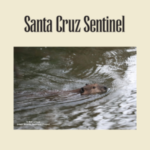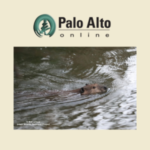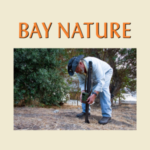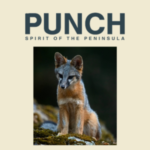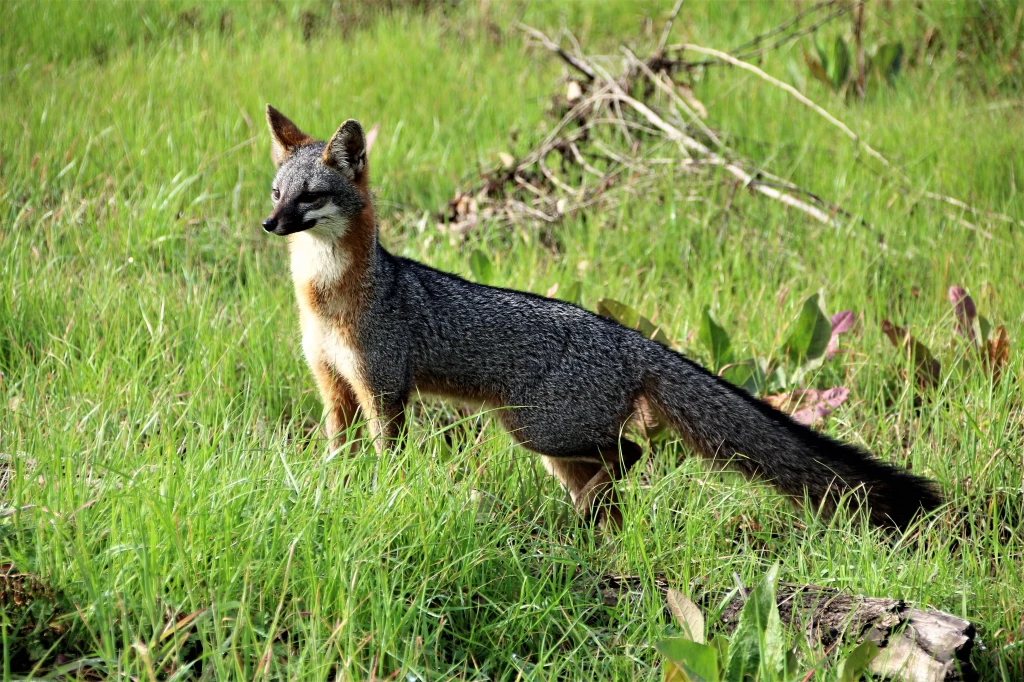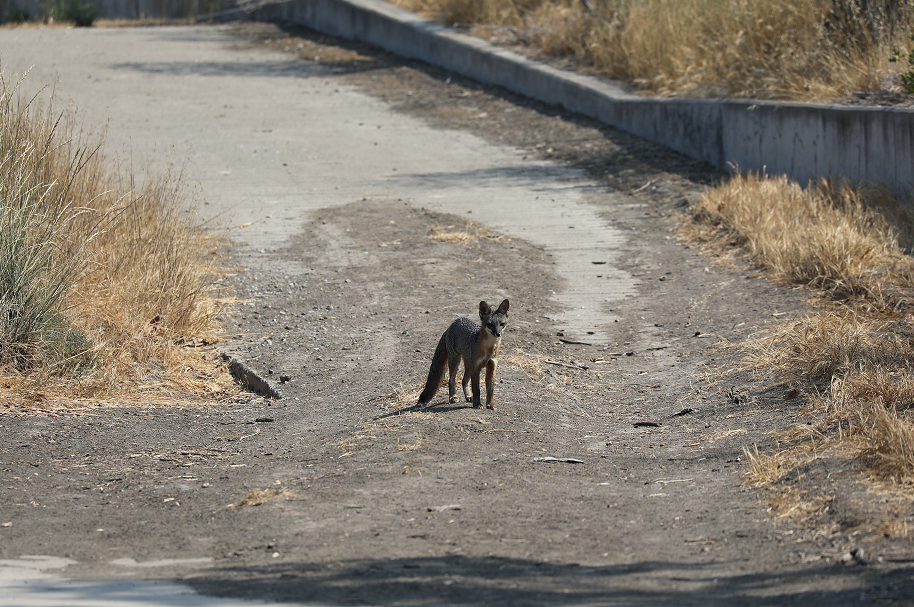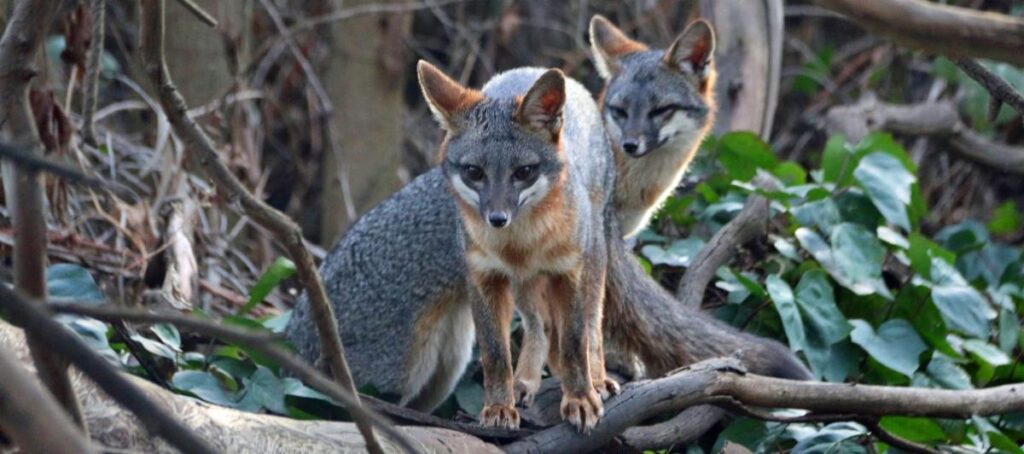by William C. Leikam
President, CEO & Co-founder, Urban Wildlife Research Project
When Predator Populations Plummet, Part 2
As noted in Part I of this report, in taking a trail camera survey of the wildlife at the Palo Alto Baylands Nature Preserve – opossums, gray fox, red fox, beaver, skunk, raccoon, muskrat, woodrat, coyote, jack rabbit, and cottontail rabbit – there has been a significant shift in some of their populations. In 2016 we saw the die-out of some 25 gray foxes due to canine distemper, the latter of which was officially confirmed by the California Department of Fish and Wildlife’s chief veterinarian. When asked where it came from, she said, “It’s endemic to California.” If we take a look at this from 2021 to 2023 it’s possible to see these shifts. In Part II we will see what all this means for the ecosystem in the Palo Alto Baylands.
With the die-out of the gray foxes Laimos and Big Eyes, there has been a sudden explosion of critters that have virtually taken over the ecosystem at the baylands. This happens when the keystone predator,* in this case the gray fox, is wiped out.
When that happens, a trophic cascade, a significant shift in the food supply, begins to overwhelm. “Famous wildlife ecologist Aldo Leopold first noted early in the 19th century that predators maintain a balance within an ecosystem. Marine ecologist Robert Paine coined the term ‘trophic cascade’ in 1980 to describe this phenomenon.” (Untamed Science) In short, the balance of Nature has been seriously overthrown and at this moment the Palo Alto Baylands Nature Preserve is undergoing a trophic cascade – the huge increase in the number of squirrels and jack rabbits, among others, has and is affecting the food chain.
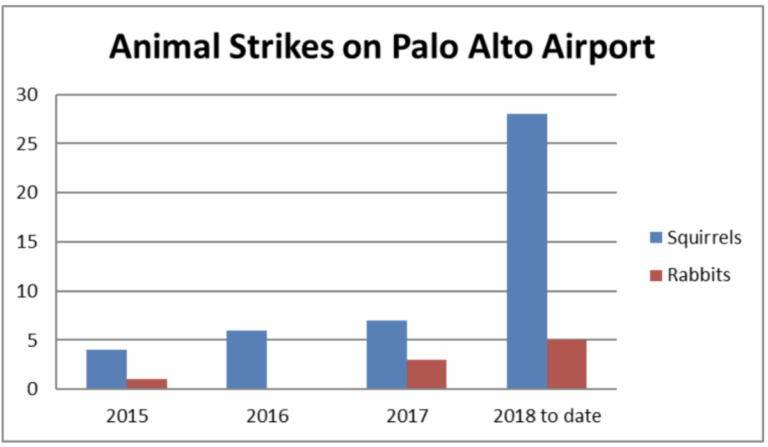
If we view this chart from the 2018 Gray Fox Report, this imbalance is clearly evident and it is creating problems everywhere, including the Palo Alto Airport where with the demise of the keystone predators in November and December 2016 this imbalance began. Since then, as you see on this chart **, there has been an increasing number of aircraft striking jack rabbits and squirrels. (At the 2018 bar it indicates to date meaning November 9, 2018.) Clearly, this imbalance in this particular environment has caused problems for the pilots flying in and out of one of the busiest small airports in California. It is for such reasons that we must have predators on the land. It is vital to understand the many roles predators play across the landscape. If we fail to understand them, then the fabric of the ecosystem disintegrates causing life and death problems for all of the remaining critters in the Baylands.
* A keystone species is a species that has a disproportionately large effect on its environment relative to its abundance.
** Data & chart compiled from airport log books by Michael Luetgens, Airport Operations Specialist
Gray Fox Population & General Health
As of this date, there are no gray foxes in the Palo Alto Baylands Nature Preserve. However, our trail cameras are still rolling, and we are optimistic a new pair will someday move into the undefended territory.
UWRP News & Updates
There were a couple of tabling events occurring in celebration for Earth Day. On Saturday April 20 we displayed our wares at Safari West. Then on April 21 we were supposed to be at CuriOdyssey, but there was instead a serious complication that meant that we and many other organizations could not participate. However, we did make an appearance and Carmen and Kate were hugely pleased that we dropped by.
In addition, Bill received an email notifying him that a film production company would like to drop by in either September or December for a film shoot at the Palo Alto Baylands Nature Preserve. None of this has gone forward as yet, but we are hoping. Producer Maeva Signore wrote, “We are actually producing a new series called “Geniuses of Nature” (Les Génies de la Nature), in which Marta Sostres, a biologist and photographer, takes us to encounter wild animals with extraordinary abilities, and those who study them. This program will be broadcast in France, on Canal +.”
Friends of Wildlife
Ways To Help Wildlife At Home & In The Community
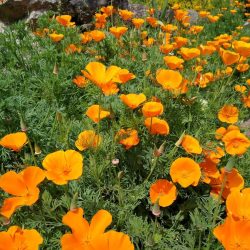
Wildlife Tip – Free Wildflower Seeds
The Santa Clara Valley Chapter of the California Native Plant Society is promoting biodiversity by giving free wildflower seeds to new native plant gardeners in their chapter area (Santa Clara and San Mateo counties) to re-energize the ecosystem in their home gardens.
Find out more here: Wildflower Ambassadors
And join the NextDoor group to learn more tips!

Community Involvement
A large unprotected S.F. Bay Area wetland may be paved over for a 400+ unit luxury housing development (never mind the fact that it sits on a flood plain). Community members are joining together to advocate for a different vision – permanent habitat protection as part of the Don Edwards National Wildlife Refuge. Learn more and sign the petition here: Save Newark Wetlands
Looking for more ways to engage? Check out the resources below
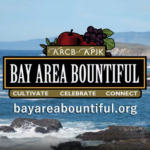
Have you seen us on TV? Catch our latest feature & interview with Bill, produced for NorCal Public Media’s Bay Area Bountiful

Today, Bill is the world’s leading authority on the gray fox. This book is an account of his experiences among the gray foxes of the Baylands, a tale of life and death, of growth and loss. Stay for a while and go exploring with the Fox Guy. Find it today at Barnes & Noble or DiAngelo Publications.

Be sure to watch our video documentary featuring UWRP’s participation in the global trail camera exhibit, Triggered By Motion


